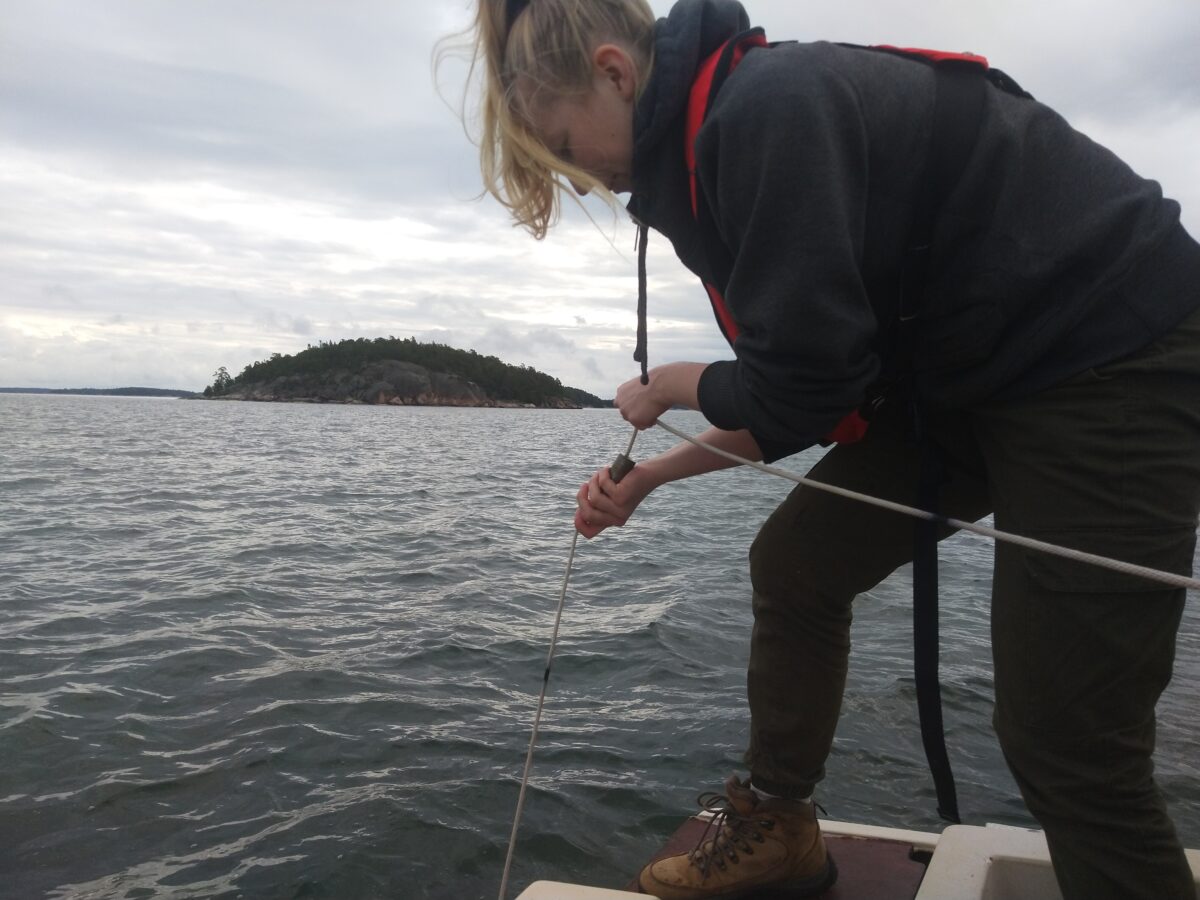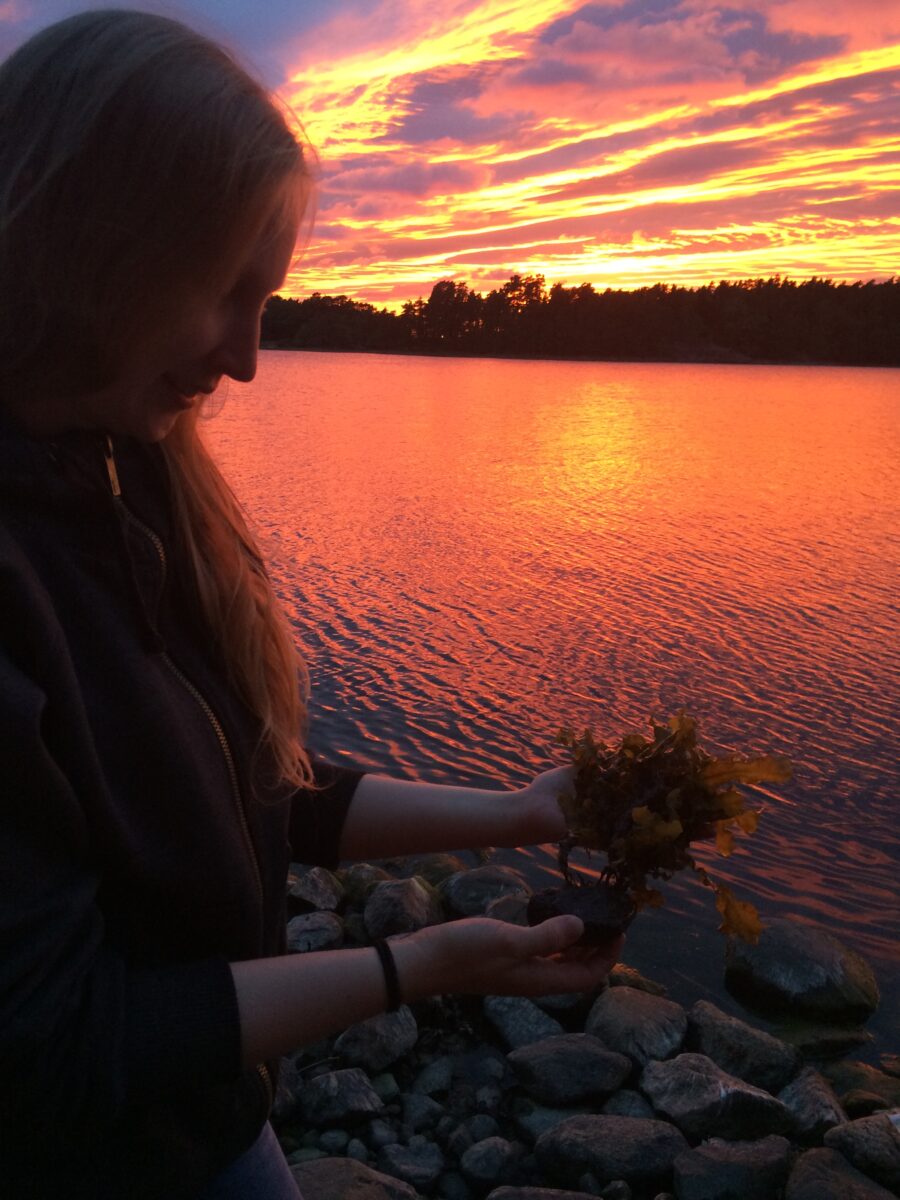Interview with biologist Jasmin Inkinen
To follow the diverse and often unpredictable paths of enquiry and collaborations in the project Spectres in Change, CAA interviews the artists and scientists working on the island of Seili at different stages of the process. The first interview with Jasmin Inkinen was conducted by Saskia Suominen during the autumn 2020.
Jasmin Inkinen is a biologist working at the Archipelago Research Institute, Biodiversity Unit of Turku University.
∼
What are you currently working on?
My work consists of collecting samples from the sea and from the ground for various projects and environmental monitoring programmes. In the autumn, the field work period slows down, final ground samples of the year are being collected, sampling equipment is taken down and fixed if necessary. Sample collecting on the sea continues all year-round.
How has working with artists been like for you? Has it brought something new to your own working?
It has deepened my understanding of my work, especially in relation to the methods I use, and I have realised how beautiful and unique the creatures I get to interact with are. Collaboration with the artists in Seili has gone well and with respect towards each other’s work. I have learned that scientists and artists examine the same subjects in a very similar way, despite the different basis and motives of our work.
You mentioned that working with artists has deepened your understanding of your work methodologically. Could you tell a little more about that?
Working with the artists has made me ponder about the difference between a human and an apparatus. How does an apparatus collect its data and how does it differ from manual work? Do we lose something essential if the apparatus does the work for us? The devices we use are calibrated regularly so that the measurements are as accurate and reliable as possible. However, do we lose some of the relevant data that only manual work could provide?
The work that both you and the artists do in Seili is long-term and process based. Do you see any similarities between your working methods?
I have noticed that we search for answers to the same questions even if our motives are different. The journey from the initial question to the final outcome is long and slow for both artists and scientists, and often the answers we find can open up new viewpoints and new questions. This might lead us into working on the same topic for decades.
Seili has its own unique ecosystem and in your work, you closely observe the changes in it. What kind of interesting observations have you made recently?
Even though Seili is not located on the main bird migration routes, some migrating birds fly through it. Normally the birds rest in Seili for one night and continue their journey in the morning. This year, however, the birds have stayed for a longer time. For example, we got to enjoy the company of kestrels (Falco tinnunculus) for a week. Due to the warm autumn weather, also the temperature of the sea water is three degrees warmer than is normal for this time of the year.
You have been involved in several CAA projects and introduced the island to the visiting artists. What do you think is most important in the dialogue between art and science? What do you consider special about Seili and how do you think artists should approach it?
I believe that the most important aspect of scientists’ work is to create knowledge and invent new solutions so that both decision makers and people in their everyday lives could commit to the most environmentally sustainable choices. Sometimes, the new knowledge provided by scientists does not appeal to the general public and the information remains cold and distant. Artists, however, are able to reach an audience that scientists and science in general cannot, even when dealing with the same information. They can make global problems seem personal, and I think this is the only way to make change in the world. We need science for the knowledge and understanding, but scientists often lack the skills to move people with the knowledge.
In Seili we have realised that we need to collect data for decades in order to understand slow changes. This information cannot be produced alone. The work requires perseverance, but it is the only way to collect evidence of the changes happening around us


